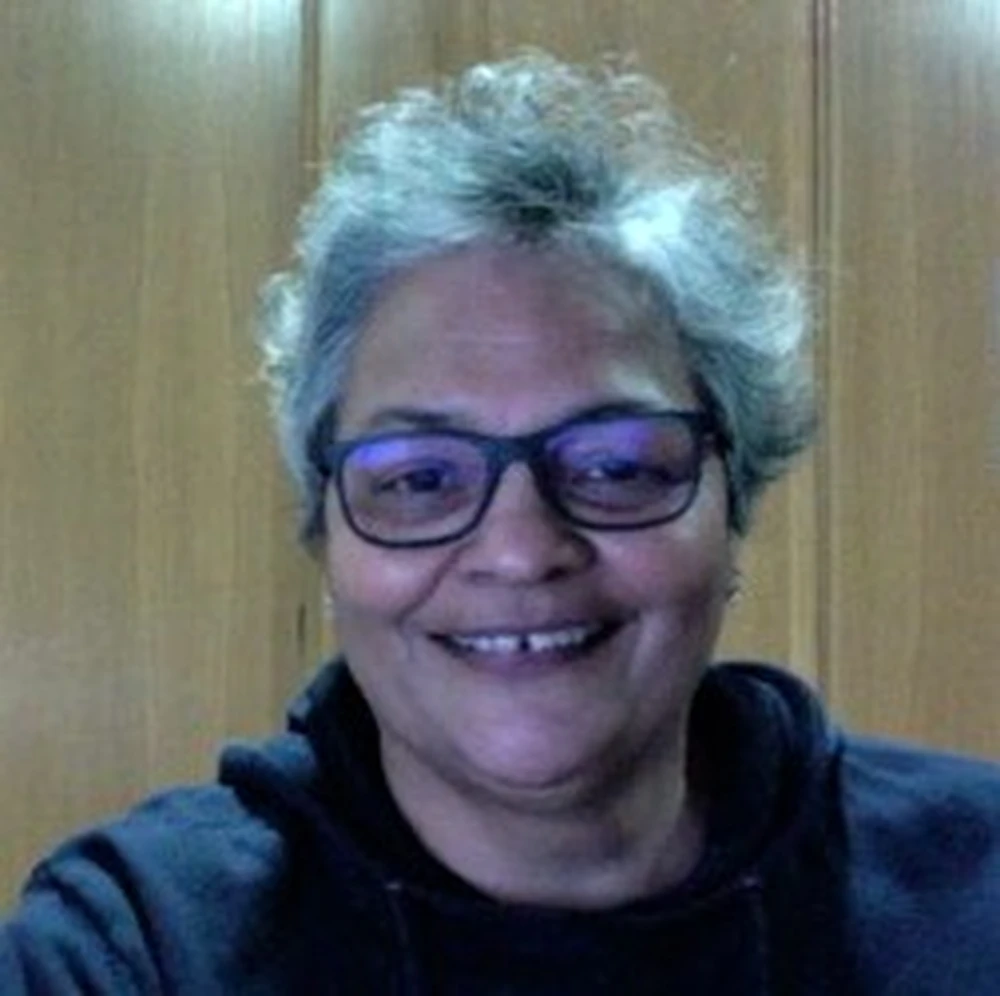
In 1989, Anna Bertelloni was a postdoctoral researcher working on natural products from marine organisms, looking for bioactive compounds, in the lab of UIUC chemistry Prof. Kenneth L. Rinehart.
Prof. Rinehart, who passed away in 2005, had become interested in the 1970s in the fledgling field of marine natural products chemistry. His work in this area led to the discovery of many new and interesting bioactive natural products, and two classes (didemnins and ecteinascidins) were exceptional contributions to science.
Didemnins are a unique class of cyclic depsipeptides discovered by the Rinehart group in the early 1980s from the Caribbean tunicate Trididemnum solidum. A tunicate is a marine invertebrate of a group that includes sea squirts and salps.
Bertelloni said the highlight of her postdoctoral research with Rinehart was the discovery of what was then called dehydrodidemnin B (DDB), now known as plitidepsin, and commercially known as Aplidin®. She still has a photo that was taken at her Green Street apartment in Urbana while she was writing the first version of the patent.
Now, more than 30 years since her postdoctoral work at UIUC, Bertelloni has garnered some media interviews, because recent research has shown that the drug plitidepsin (aplidin) possesses antiviral activity with potent preclinical efficacy against SARS-CoV-2.
The team of researchers from the Icahn School of Medicine at Mount Sinai "and the University of California at San Francisco recently published their work in Science, revealing one of the most promising efforts to date in identifying an already approved drug that could be successfully repurposed to fight COVID-19," according to a report by Mount Sinai Medical System. Plitidepsin is approved in Australia—under the name Aplidin—as a treatment for multiple myeloma, a cancer that forms in a group of white blood cells, the report says, and "one of plitidepsin’s strengths is that it inhibits eEF1A, a host protein within human cells that every variant of SARS-CoV-2 needs to survive."
As she mentioned in a recent interview in a newspaper, Bertelloni said the work done at Mount Sinai is great and gives some hope for a future treatment of COVID-19.

"But nothing of that will be possible if basic research, with a marine extract, would not have been done before,” said Bertelloni, who now directs the Nuclear Magnetic Resonance (NMR) Laboratory at the University of Salamanca in Spain. “As Herbert C. Brown (Nobel Prize 1979) said, ‘There is always an imponderable factor in a scientific discovery, you can call it luck, fortune, but it exists.’ My case was the same, as similar compounds were previously isolated from a Caribbean tunicate (Trididemnum solidum) by Rinehart’s group.”
Bertelloni was born in Santo Domingo, Dominican Republic, but was mostly raised in Puerto Rico where her mother was a humanities professor at The University of Puerto Rico, Mayagüez Campus. As a child, Bertelloni loved science and literature but connected with chemistry in 1970 when she received a little chemistry lab kit as a gift.
“And then I burned all my grandmother’s flowers,” said Bertelloni, who went on to earn her PhD in organic chemistry at the University of Salamanca. Her PhD research was key to her getting a postdoctoral position in Rinehart’s lab.
“What I did at UIUC was crucial for my career, because I learned a different way to work with Natural products, guided by the so-called bioactivity instead of only structural determination,” Bertelloni said. “I also realized that I prefer work where you can help other people to use the NMR facilities according to what they need to proceed in their work.”
After UIUC, she first returned to Madrid and worked for PharmaMar from Jan 1990 to September 1991, then returned to the University of Salamanca in 1991 for a post-doctoral fellowship. After two years, the department received a FEDER grant to buy a 400 MHz NMR spectrometer.
“I accepted the position at the NMR Lab, where I can still work on structural determination and teach and give support to students and researchers with less experience with NMR data,” she said. “I love to help students to understand that research requires determination and patience, that sometimes the negative results teach you more than the positive results, that competitiveness is fine as long as you don't forget that you work with people and that they all deserve respect, even if what they do is clean the lab. I like my work, but above all, I like to help students find their way or get ahead with their work.”
Bertelloni said her nine months as a postdoc living in Urbana were full of new experiences.
“My first tornado; a general library where you find newspapers from all over the world and literature in English, Italian, and Spanish for free time on weekends; bike rides to get to know the environs; having dinner in a typical burger restaurant that has nothing to do with McDonalds or Burger King; having coffee breaks at Espresso Royale near the RAL building; knowing people from different places in the U.S. and around the world,” Bertelloni recalls. “Also, I can distinguish right now that -10ºC is very different from -20ºC, and that the wind chill factor is very important.”